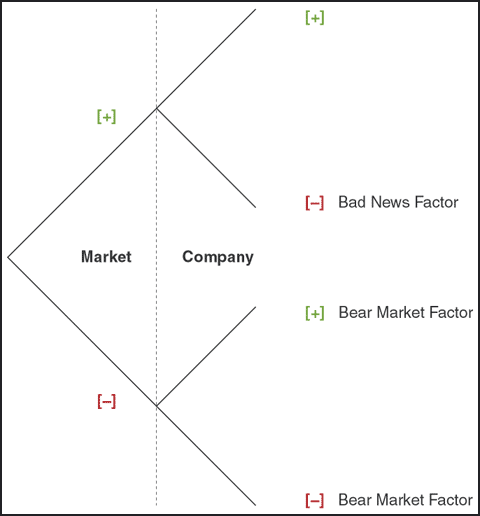To determine the Bear Market Factor we analyze the relationship between a stock's price movements and
declining markets, hence the name, "Bear Market Factor". Ultimately then, the question that concerns
us is: on the average, when the market declines, how does a stock tend to react?
How to interpret the Bear Market Factor:
Simply take the percentage difference (in basis points) between the decline of the reference
index and the performance of the stock. For example, if a stock drops 3%, while during the
same time period its reference index goes down 1%, the percentage difference is 2, or 200
basis points. Therefore, our Bear Market Factor will be 200. If the decline of the stock is less than
that of the index, or if the stock goes up, our indicator will be expressed in a negative
number. A negative number indicates that the stock tends to show solid resistance to drops in
the market.
Understanding Correlation:
The closer a stock's Bear Market Factor is to zero (on either the positive or negative side), the more
it will be inclined to mirror its relative index's behavior when the index goes down.
In bi-weekly intervals that correspond to our updates, we track an index's movement over the
course of a standard sliding 52-week period. Each time the index goes down we calculate the
percentage difference between it and each one of its individual stocks. This difference is
then absorbed into the yearly average and expressed in basis points as the Bear Market Factor.
Things to remember:
-
The higher the Bear Market Factor, the more a stock is likely to drop when its relative index drops.
-
A Bear Market Factor that is strongly negative means the stock is more likely to resist losses in a
declining market.
